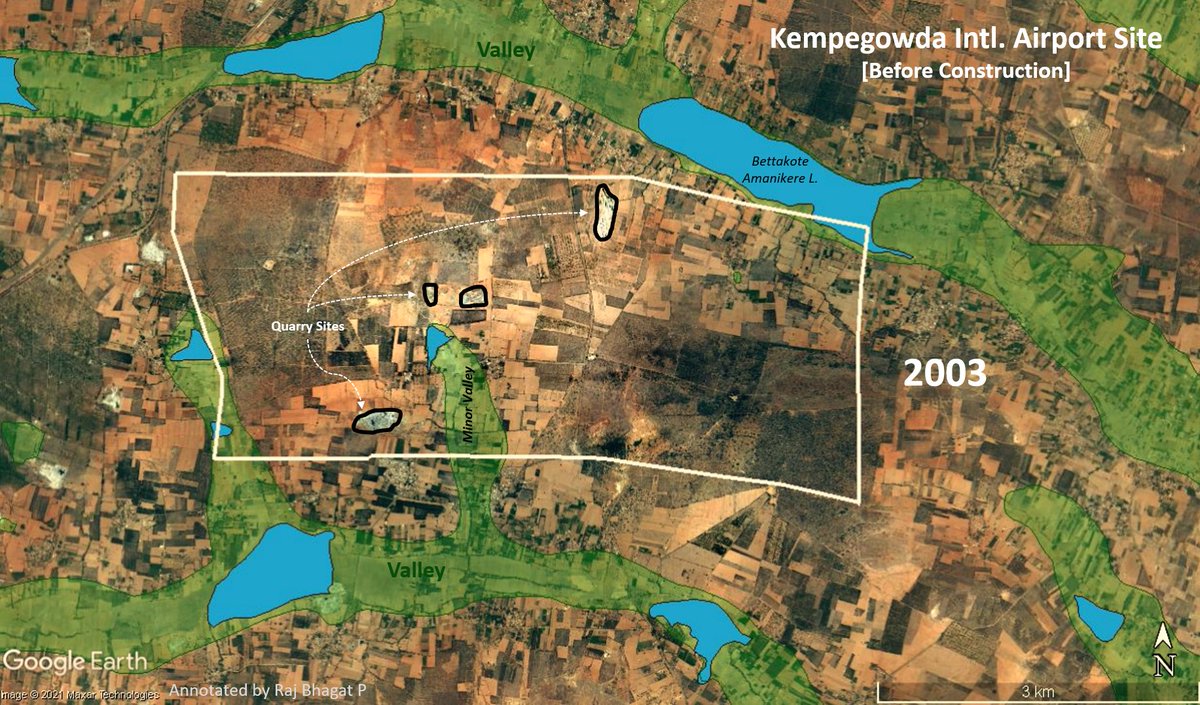#Thread - #Bengaluru Airport:
What exactly happened in Bengaluru airport that led to the flooding/stagnation a few days before?
My version:
Before the airport, area (marked in white) was in a ridge between 2 valleys, had cropland, quarries, a minor valey, open scrubland
1/n
What exactly happened in Bengaluru airport that led to the flooding/stagnation a few days before?
My version:
Before the airport, area (marked in white) was in a ridge between 2 valleys, had cropland, quarries, a minor valey, open scrubland
1/n

Even after the completion of phase I which was the runway in the northern side and the terminal, the minor valley was not affected significantly as it was all limited to the northern side. One quarry site also remained holding stagnant water.
2/n
2/n

This map gives you the terrain of the airport area and one can easily notice the ridge on which it was built. Water was supposed to drain into the main valleys through the minor valley.
Approximate water flow directions are marked for better understanding of terrain
3/n
Approximate water flow directions are marked for better understanding of terrain
3/n

As Airport(new runway) is being expanded to the south (marked in red), minor valleys & paths for water to drain were being blocked & heavily concretized
I dont know if final design incorporates / has enuf drains, but during construction phase it didn't have provision for flow
I dont know if final design incorporates / has enuf drains, but during construction phase it didn't have provision for flow

Beyond the construction phase also, there could be some issues as the old lake which existed in the middle of the airport are is being concrete lined & will not be helpful in handling flood situations in future. 

In conclusion:
The rainfall in airport was heavy but it is not reason behind the flood scenes in the airport. Over concretization which reduces percolation of water, blockage of natural drains caused it
Respect the valley! It could continue if necessary paths are not provided
The rainfall in airport was heavy but it is not reason behind the flood scenes in the airport. Over concretization which reduces percolation of water, blockage of natural drains caused it
Respect the valley! It could continue if necessary paths are not provided
Sorry if this was too late. Didnt work for few days because of vaccine :(
• • •
Missing some Tweet in this thread? You can try to
force a refresh




















